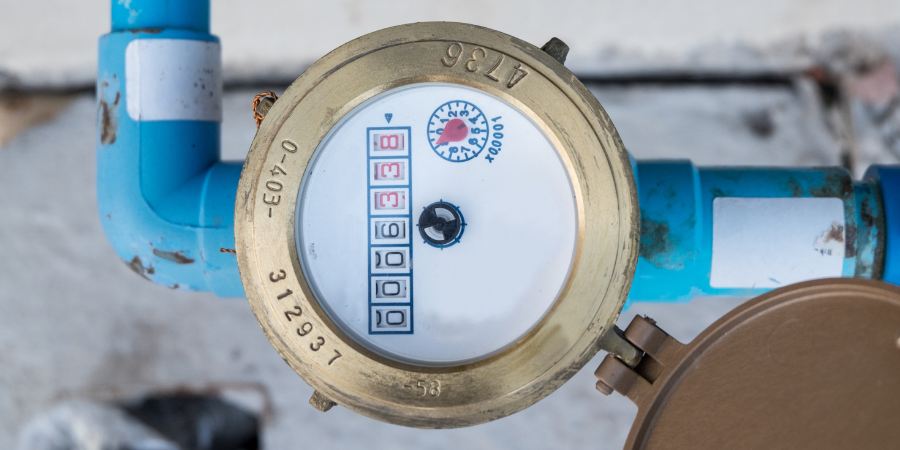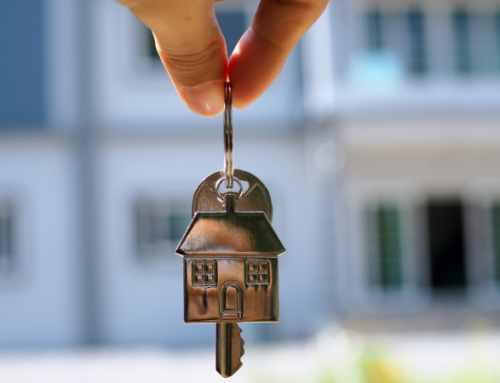The water meter is an important component of the water supply system in your home. The meter is the equipment used by your water supplier to measure the quantity of water entering your home so they can determine the amount of your monthly bill.
We will find out the locations where meters are installed at your home and how, regardless of their location, they are able to be read remotely sending important data from your meter to your water company.
We will find that monthly water bills are closely tied to your sewer bill. As incoming water is measured, the assumption is the same amount will flow out of your home and thus your sewer bill reflects that amount. However, you will learn there is a clever way in which you can reduce how much you are charged for your sewer bill each month.
Finally, we will learn how to accurately read your water meter and how monitoring it may save you from paying for water that never reaches your faucets.
Types of Water Meters and How They Operate
All water meters measure the amount of water coming into your home in either cubic feet or in gallons depending on the type you have installed. Here we will look at the 3 types so you can better understand how the water is measured.
Mechanical Water Meter
This type of water meter is the most common type used. It operates in a straightforward manner. As water from your supplier enters your home it comes from a water supply line and passes through the meter causing an impeller to rotate. Each rotation produces a measurement of how much water is flowing past.
A disadvantage to this type of water meter is impurities and hard water minerals found in the water tend to deteriorate the internal mechanisms causing them to fail.
Electromagnetic Water Meter
In measuring the flow rate of your water this type of meter uses voltage. As water enters your home, the pipe that carries it in is surrounded by magnetic fields and electrodes that generate voltage. The velocity of the water determines the voltage so the meter can interpret the relationship between the voltage and the flow rate to accurately measure usage.
Ultrasonic Water Meters
These meters work by sending sound waves through the entering water to determine the flow rate. They use these waves by either measuring how far the sound wave moves from one point to another (transit time) or they measure the difference in the frequency of the signal (doppler shift). Both methods provide accurate data needed to determine usage.
Where Are Water Meters Located?
A home’s water meter is most frequently installed on an exterior wall facing the street side of the house. They are placed there for easy remote reading by a water company employee who uses radio waves to transmit the data from your meter to their offices. They drive through your neighborhood and, using an automated meter reading system, extract information combined with the technology to recognize incorrect or inaccurate readings.
In some areas, the municipal water company buries the water meter underground. These types of meters can only be accessed through a pop-up lid but can still be read remotely.
In very cold climates some water meters are installed on an exterior wall but placed inside to keep them from freezing. The pipes leading to the meter are buried below the frost line and every water meter, regardless of its location, can benefit from winterization using insulating kits.
Water Bills and How They Relate to Your Sewer
Most homes have one water meter which measures the amount of water entering your home. What you may not understand is that your sewer bill is closely tied to your water usage. The sewer company makes the assumption that the amount of water coming in through your water supply is equal to the amount going out through your drainage system or sewer lines and therefore charges you according to your usage number. This makes sense until you think about the water you use to hydrate your lawn and gardens or use to wash your car. This outdoor water use does not travel through drain pipes but instead is being absorbed by the ground and should not be calculated in your monthly sewer bill.
Some cities are permitting homeowners to install a meter for indoor water use and a separate one for outdoor water use. This is a clever way to reduce your sewer bill without ongoing action.
How to Read Water Meters
Reading your water meter depends on the type of meter you have. We will outline how to read the two most common types of water meters below.
Digital Water Meters
A digital water meter is simple to read. The display alternates between two measurements. First, the meter read displays the number of gallons or cubic feet of water used. The second measurement is the flow rate which is a measurement of the gallons or cubic feet of water passing through the meter per minute.
Some digital meters record and display historical data which can be useful when searching for a leak.
Modern Analog Water Meters
These types of meters have a large sweep hand that measures the water used in gallons or cubic feet. Each gallon that passes through the meter is recorded by the sweep hand advancing on the number. A complete rotation of the sweep dial equals 10 gallons of water.
Most analog meters also come with an analog dial which is a flow rate indicator that rotates as water passes through.
Finding Water Leaks Using Your Meter
Since all water meters measure the amount of water coming into your home they can be useful tools when looking for hidden water leaks in your home. The procedure is simple and can provide accurate proof that a water leak is occurring despite not being able to see it.
The first step is to turn off every tap, spigot, and water-using appliance in your home. This includes your irrigation system, your ice maker, or any other not-so-obvious source of water use.
Next, look at your water meter and manually record the data displayed. Wait 30 minutes or so and recheck the meter to see if the dials or hands have advanced. If they remain the same you can feel confident no leak is present. However, if the dial has advanced that means water is entering your home but, due to a hidden leak, is not reaching your faucets or appliances despite the fact that you are being charged for this unused water.
Have A Water Leak In North County?
A water meter is a method used by water suppliers to measure the volume of water that enters your home. The meter is used to not only calculate the amount billed to you by your water supplier but it is also used to determine the sewer company’s charges. Perhaps most importantly, a water meter can be used as an accurate leak detection device to help you find hidden water leaks that are costing you money and resulting in potentially damaging consequences to your home’s infrastructure.
If you would like to understand more about the role of your water meter or if you suspect you may have a hidden leak, give us a call.
Our team of plumbing experts in North County can find and repair any type of water leak! Contact us today!






